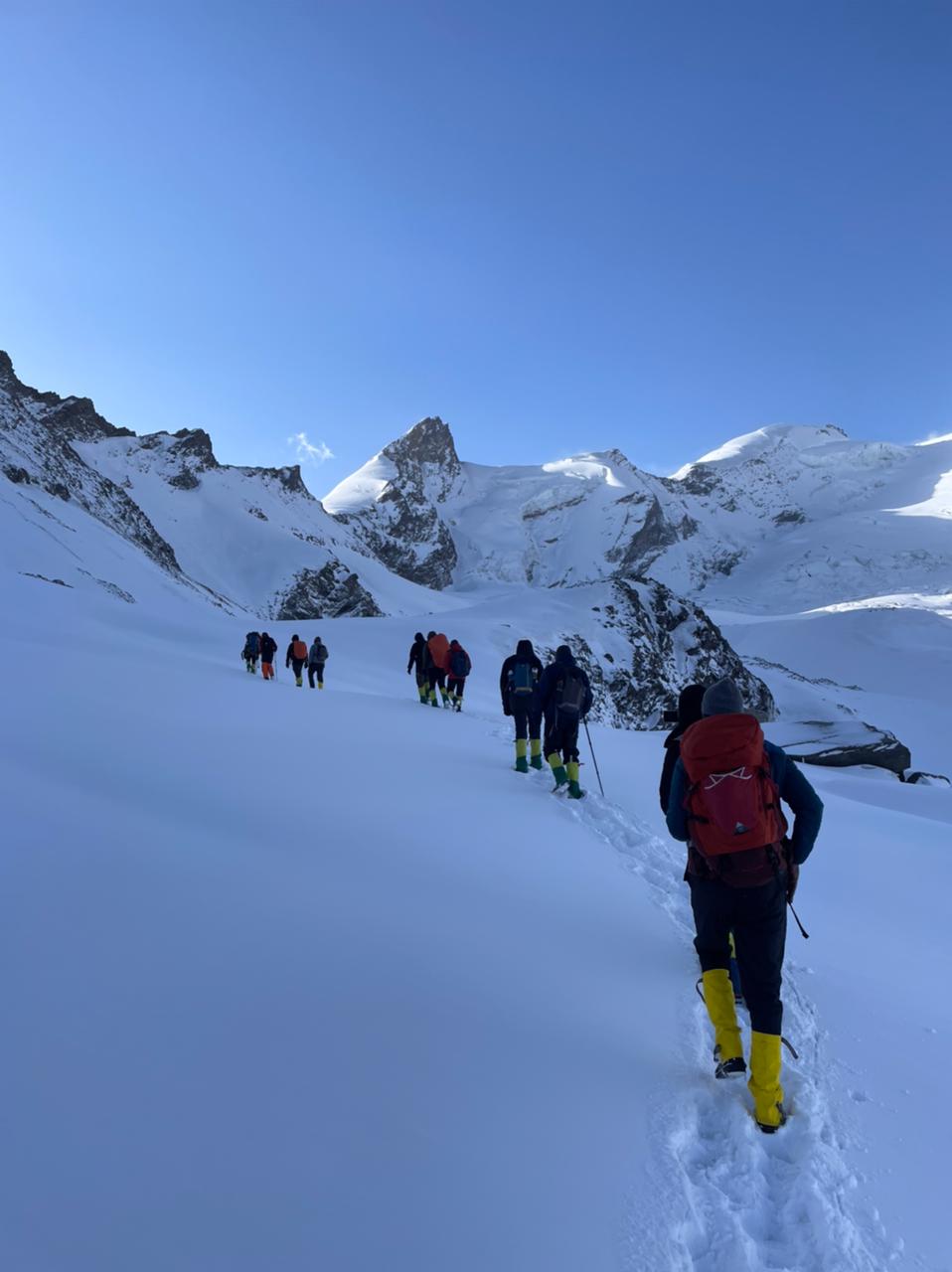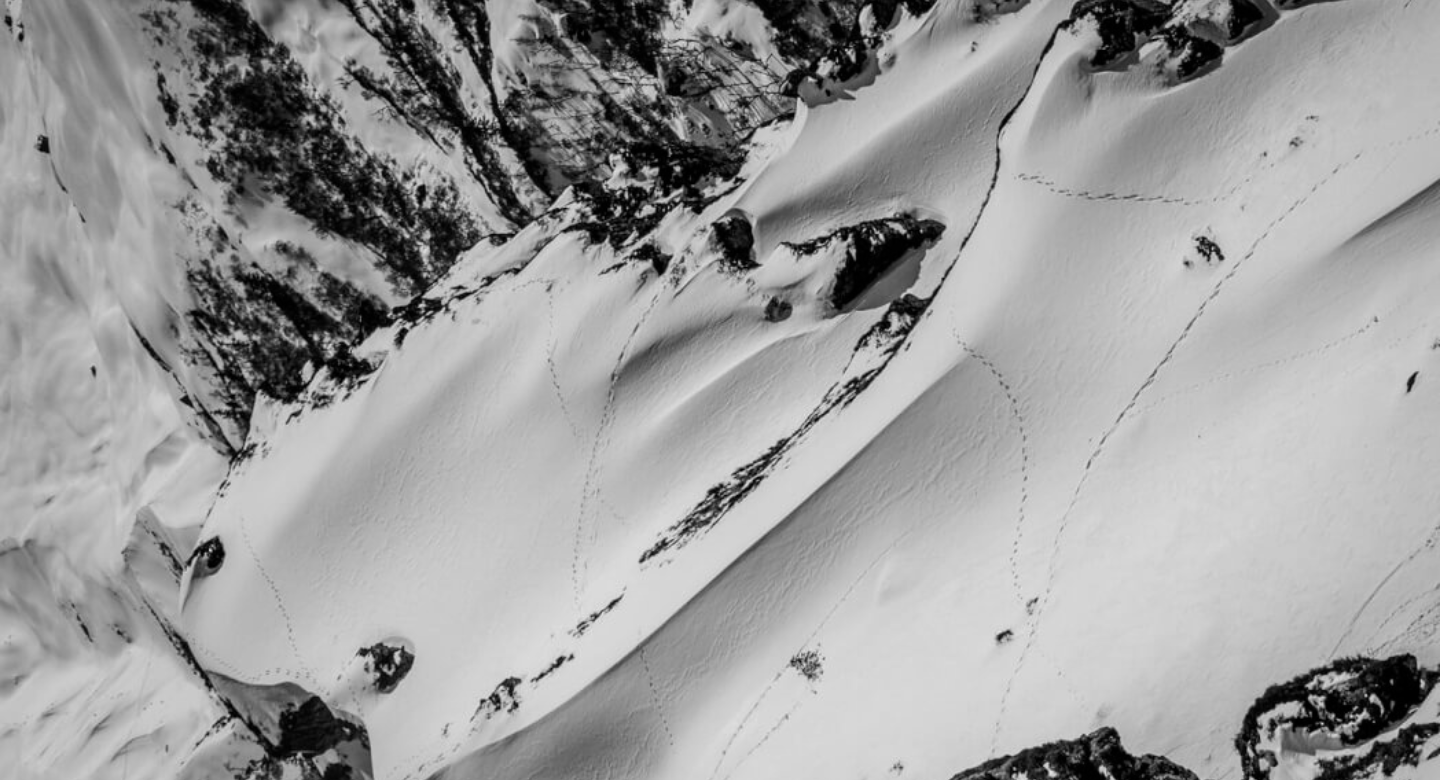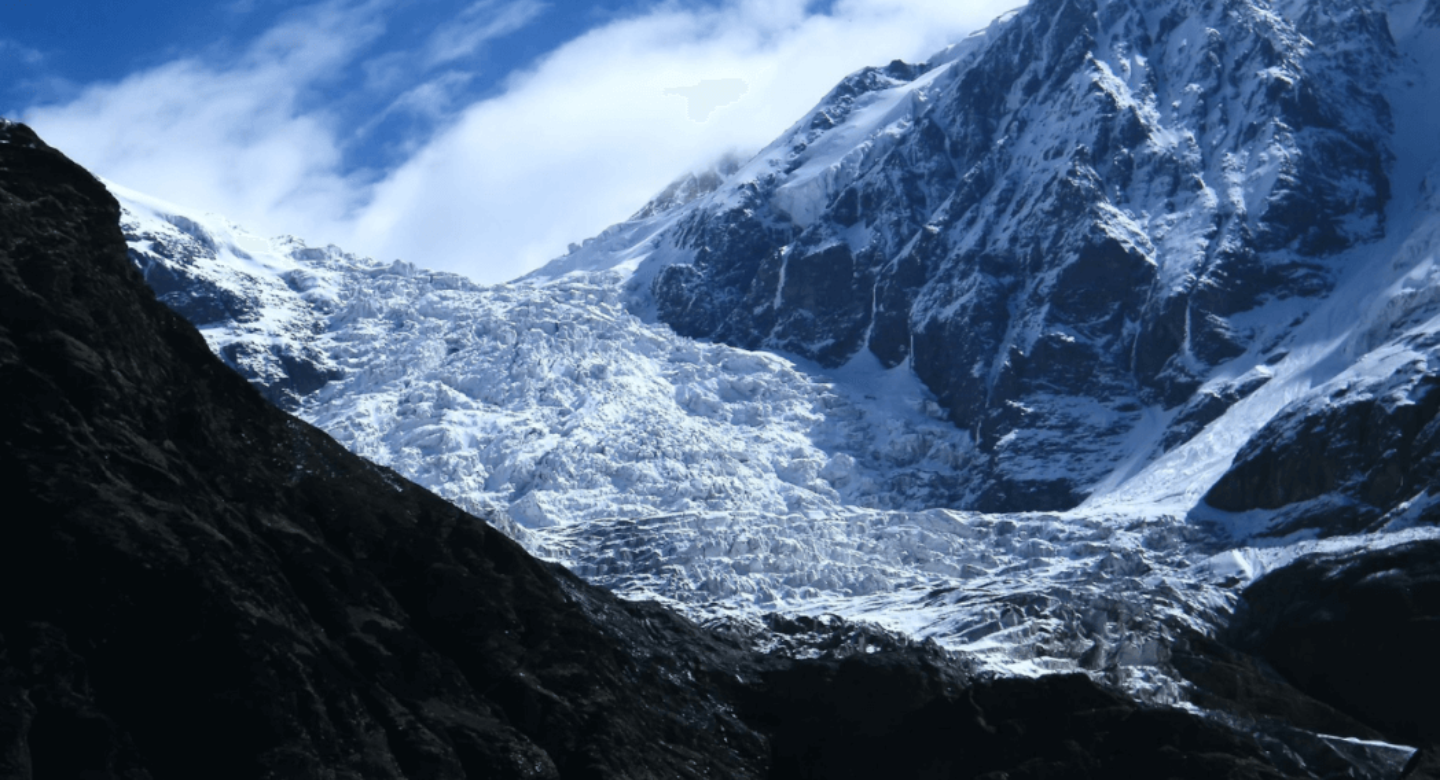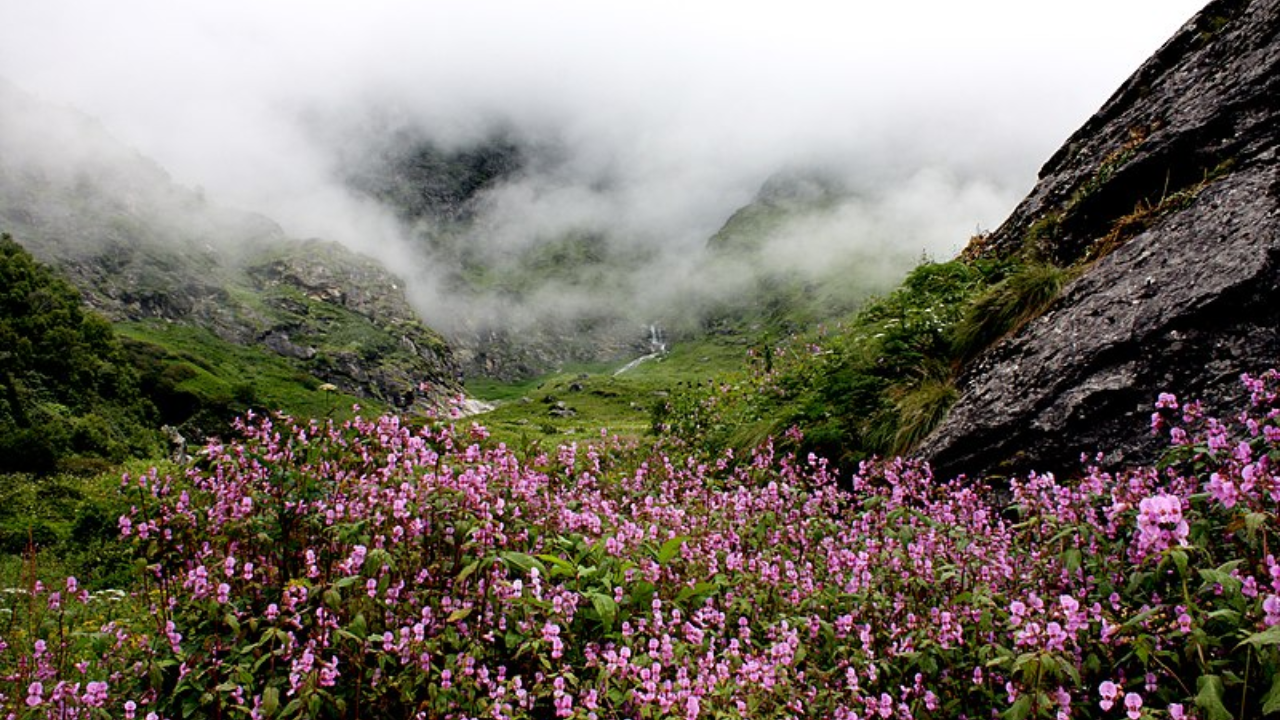
Kalindi Khal Trek
15 Days
99 Km
19,500 FT
18+
Pro
The Kalindi Khal Trek is one of the most challenging and thrilling high-altitude treks in India, reaching an altitude of 19,520 ft. This trans-Himalayan expedition connects Gangotri to Badrinath, passing through glacial terrains, crevassed ice fields, and remote valleys. The trek offers stunning views of iconic peaks like Shivling, Meru, Bhagirathi, and Satopanth while traversing through rugged moraines and glaciers. Due to its extreme altitude and demanding terrain, this trek is recommended only for experienced trekkers and mountaineers looking for an ultimate Himalayan adventure.
Why This Trek?
- One of India’s Toughest Treks – A demanding and high-altitude expedition, ideal for experienced trekkers.
- Majestic Himalayan Peaks – Witness towering peaks like Shivling (21,467 ft), Bhagirathi (22,493 ft), and Meru (21,850 ft).
- Glaciers and Ice Fields – Navigate through Vasuki, Chaturangi, and Suralya glaciers, crossing moraines and crevasses.
- Sacred Pilgrimage Route – The trek connects the holy shrines of Gangotri and Badrinath, adding spiritual significance.
- Remote and Pristine – Experience the raw beauty of the high Himalayas, far from civilization.
Included/Excluded
Select Dates
{{type.name}}
{{type.display_price}} per person
Guests
Extra prices:
- {{total_price_html}}
- {{pay_now_price_html}}
Guest in maximum
BOOK NOW Book NowItinerary for
Kalindi Khal Trek

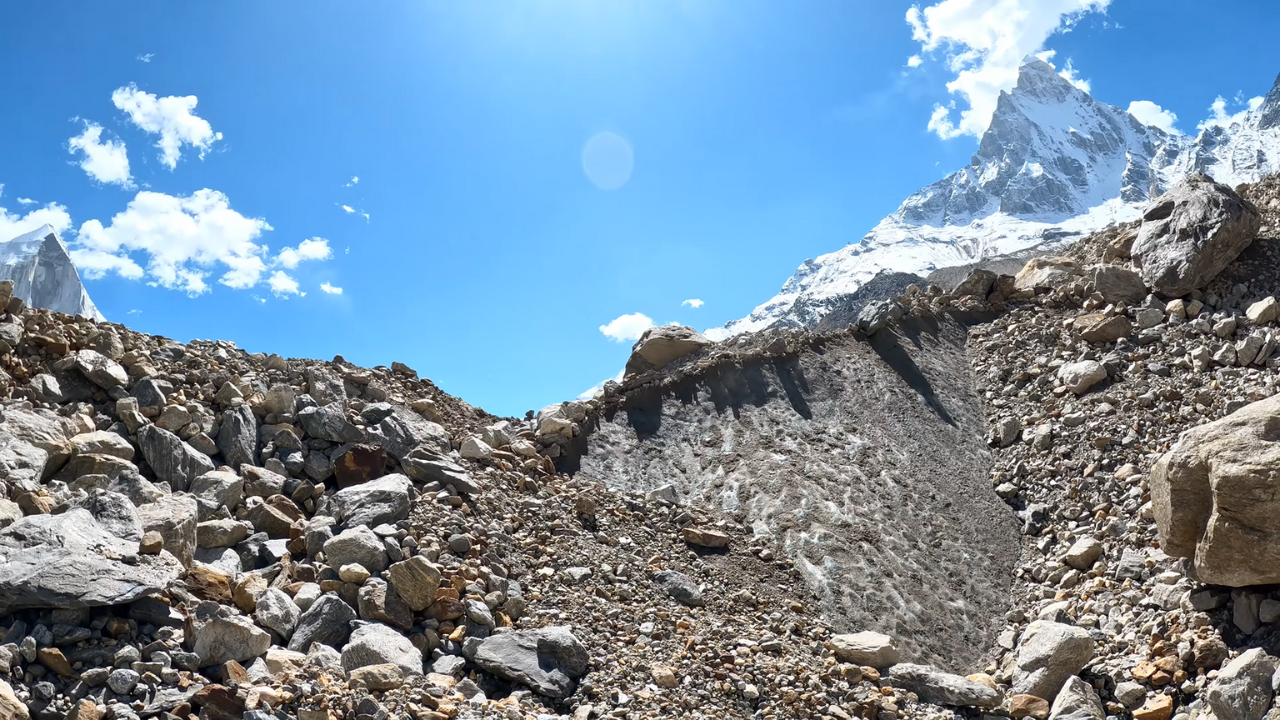








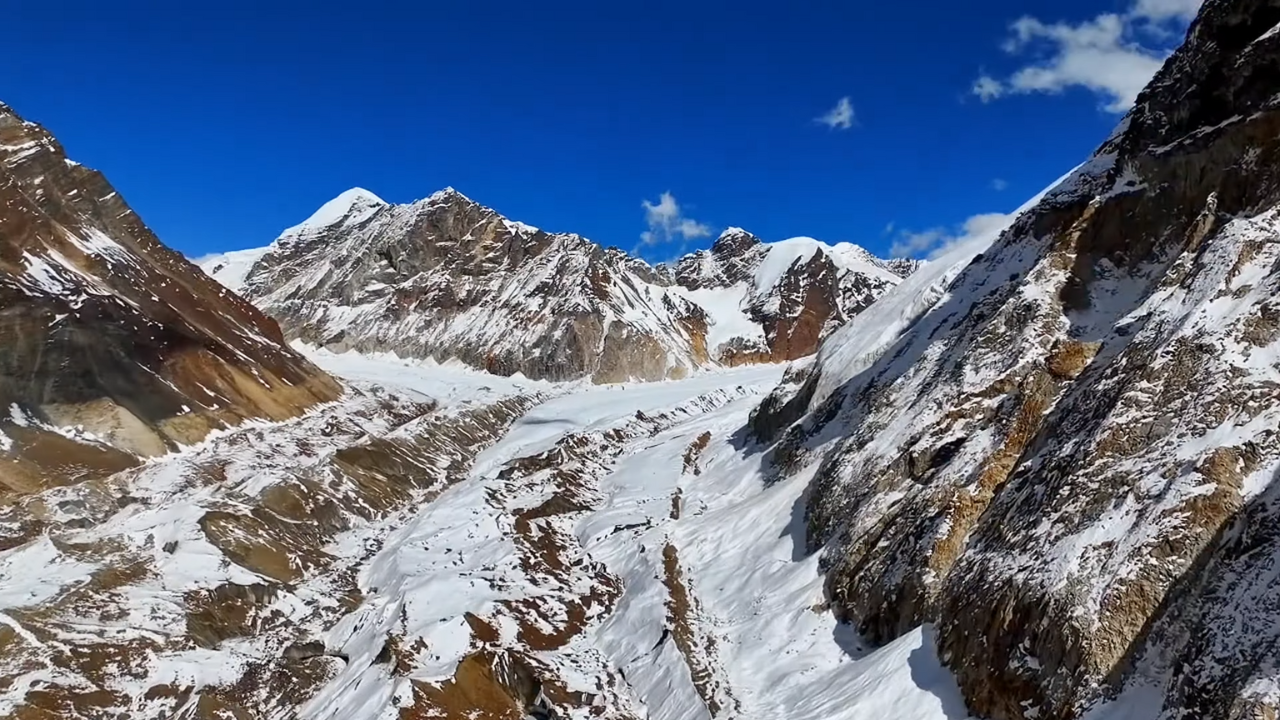




Complete Trek Information
The best time for the Kalindi Khal Trek is from July to early September, when the weather is relatively stable, and the glaciers are accessible. Winter (October to May) brings extreme cold and heavy snowfall, making the trek nearly impossible. The monsoon period (July-August) should be approached with caution due to unpredictable weather conditions and glacial melting.
Reaching Gangotri for the Kalindi Khal Trek requires a combination of air, rail, and road travel, as Gangotri does not have direct train or air connectivity. Here’s how you can reach Gangotri through different modes of transport:
1. By Flight
-
Nearest Airport: Jolly Grant Airport (DED), Dehradun (approximately 250 km from Gangotri)
How to Reach Gangotri from Dehradun Airport:
-
Hire a private taxi (takes around 8–10 hours).
-
Take a bus from Dehradun to Uttarkashi and then another bus or shared taxi to Gangotri.
-
Shared cabs are also available from Dehradun to Uttarkashi and Gangotri.
2. By Train
Nearest Railway Stations:
-
Dehradun Railway Station (250 km from Gangotri)
-
Haridwar Railway Station (290 km from Gangotri)
How to Reach Gangotri from the Railway Station:
-
From Dehradun or Haridwar, you can take a bus or shared taxi to Uttarkashi and then proceed to Gangotri.
-
Private taxis are also available for a more comfortable journey.
3. By Bus
From Rishikesh/Dehradun/Haridwar to Gangotri:
-
Direct Buses to Gangotri are available during the pilgrimage season.
-
Alternatively, take a bus to Uttarkashi and then another to Gangotri.
-
Shared jeeps and taxis are also available from Uttarkashi to Gangotri.
Pack smart, trek safe!
Ensure you're prepared for every adventure with this essential checklist of gear and supplies. Whether you're a beginner or a seasoned trekker, the right equipment makes all the difference. Download checklist's pdf here
Basic Gear
| Backpack with Rain Cover | (40 - 50 ltr) Comfortable Shoulder Straps |
| Day pack with Rain Cover | 20 - 30 ltr (If off-load opted) |
| Walking stick | Advisable (At least one) |
| Water Bottle / Hydration pack | 2 Bottles(1 liter each), Hydration Pack 1 (Pack) + Bottle |
| Small size tiffin/lunch box | 1 Nos |
| Snacks | Energy bars, dry fruits, electral/ors |
| Personal Medical Kit | Consult your doctor |
Clothing
| T-Shirt (Synthetic quick dry) | 1 Full & 1 Half sleeves |
| Fleece T-shirt | 1 Nos |
| Wind stopper / Fleece jacket | 1 Nos |
| Windproof Jacket | 1 Nos |
| Down feather / Hollow jacket | 1 Nos |
| Thermal inner (Upper and Lower) | 1 Nos |
| Trek Pant (Synthetic quick dry) | 1 Nos |
| Wind stopper / Fleece Pant | Not required |
| Waterproof gloves | Not required |
| Fleece / woollen gloves | 1 Pair |
| Poncho / waterproof Jacket and pant | 1 Nos |
Head Gears
| Head torch | 1 Nos. (Avoid Hand torch) |
| Sun cap | 1 Nos. (One that covers the neck as well) |
| Woolen cap | 1 Nos. |
| Balaclava | Not required |
| Buff / Neck-gaiters | 1 Nos |
| Sunglasses | UV with dark side cover, People who wear spectacles - (A)- Use contact lenses | (B)- Photo chromatic glasses |
Foot Gears
| Trekking shoes | 1 Pair (Waterproof, high ankle with good grip) |
| Floaters / flip-flops | 1 Pair |
| Cotton socks | 6 pairs |
| Woollen socks | 1 pairs |
| Gaiters | 1 Pair (TTH provides when required) |
| Micro spikes | 1 Pair (TTH provides when required) |
Personal Utilities
| Sunscreen cream | 1 Nos |
| Moisturiser | 1 Nos |
| Chap-stick / Lip balm | 1 Nos |
| Toothbrush and toothpaste | 1 Nos |
| Toilet paper & Wipes | 1 Nos |
| Soap / hand sanitizers | 1 Nos |
| Antibacterial powder | 1 Nos |
| Quick dry towel | 1 Nos |
At Scoutripper, we understand that plans can change. You can reschedule your booking up to 24 hours before your experience begins. Changes are subject to availability and any applicable price adjustments. Rest easy knowing your adventure is flexible!
At Scoutripper, we value flexibility but also adhere to clear cancellation guidelines:
- Full Refund: Cancel at least 6 full days before the experience starts.
- 50% Refund: Cancel between 2 and 6 full days before the start time.
- No Refund: Cancellations made less than 2 full days before the experience start time will not be refunded.
Additionally:
- Changes are not accepted less than 2 full days before the experience begins.
- Cut-off times are based on the local time of the experience.
- Some experiences require a minimum number of participants. If the minimum isn’t met, you’ll receive a full refund or the option to reschedule.
Enjoy peace of mind with our clear and transparent policies!
ATM Availability:
Nearest ATM: Gangotri (not always reliable due to cash shortages).
Best Option for Withdrawals: Uttarkashi or Dehradun.
Carry enough cash to cover all expenses during the trek.
Mobile Network & Internet:
- Gangotri & Badrinath have network coverage for all major providers.
- No connectivity beyond Gangotri.
Electricity & Charging Points:
Last charging point: Hotel in Gangotri.
No access to electricity during the trek—carry a high-capacity power bank (10,000+ mAh).
Mandatory Documents:
- Copy of ID Proof
- Medical Certificate
FAQs about
Kalindi Khal Trek
Kalindi Khal is a high-altitude mountain pass situated in the Garhwal Himalayas of Uttarakhand, India, at an altitude of 5,947 meters (19,505 feet). The trek connects Gangotri to Badrinath, passing through some of the most remote and challenging terrains of the Indian Himalayas.
The Kalindi Khal Trek is classified as challenging. It involves steep ascents, glacier crossings, crevassed terrain, and unpredictable weather conditions. It is recommended only for experienced high-altitude trekkers and mountaineers with prior experience in technical trekking and ice climbing.
The best time for the trek is June to early July and September to early October. During these months, the weather is relatively stable, and the snow and glacier conditions are more manageable. Monsoon (July-August) is not recommended due to heavy rains and landslides, and winters (November-April) are extremely harsh with heavy snowfall.
The trek spans 90-100 km and usually takes 12-15 days to complete. The journey begins at Gangotri and passes through Bhojwasa, Gaumukh, Tapovan, Nandanvan, Vasuki Tal, Kalindi Base, and finally, Badrinath.
Yes, prior high-altitude trekking experience (above 5,000 meters) and basic mountaineering skills are mandatory. Trekkers should be familiar with using ropes, crampons, and ice axes for glacier travel. The trek also demands excellent physical fitness and endurance.
Trekkers need multiple permits, including: Forest department permit (since the trek passes through Gangotri National Park). Inner line permit (due to proximity to the Indo-Tibetan border). Special permissions from the Indian Mountaineering Foundation (IMF) or state authorities. Most organized trek operators arrange these permits in advance.
The Kalindi Khal Trek includes glacier walks, moraine fields, high-altitude passes, and crevasse-ridden ice fields. Major challenges include: Crossing the massive Gangotri and Chaturangi glaciers. Climbing steep snow-covered slopes at Kalindi Khal. Navigating extreme cold, altitude sickness, and unpredictable weather conditions. Managing long trekking days with limited support in remote areas.
There are no permanent accommodations on this route. Trekkers must camp at designated sites along the trail. Food options are limited, and most teams rely on pre-packed meals and basic cooking. A dedicated support team (guides, porters, and cooks) is necessary for carrying supplies.
Essential gear includes: Layered high-altitude clothing (down jackets, thermals, gloves, waterproof gear, etc.). Trekking boots, gaiters, crampons, ice axe, and harness. Sleeping bag (-20°C or lower), trekking poles, sunglasses, and sunscreen. First-aid kit, altitude sickness medication, and water purification tablets. Energy bars, dry fruits, and high-calorie food items for sustenance.
Absolutely! The Kalindi Khal Trek is one of the most thrilling and adventurous high-altitude expeditions in India. It offers breathtaking views of Mt. Shivling, Meru, Bhagirathi peaks, and Vasuki Parbat. Completing this trek is a true test of endurance, mountaineering skills, and determination, making it a dream trek for seasoned trekkers and climbers.


